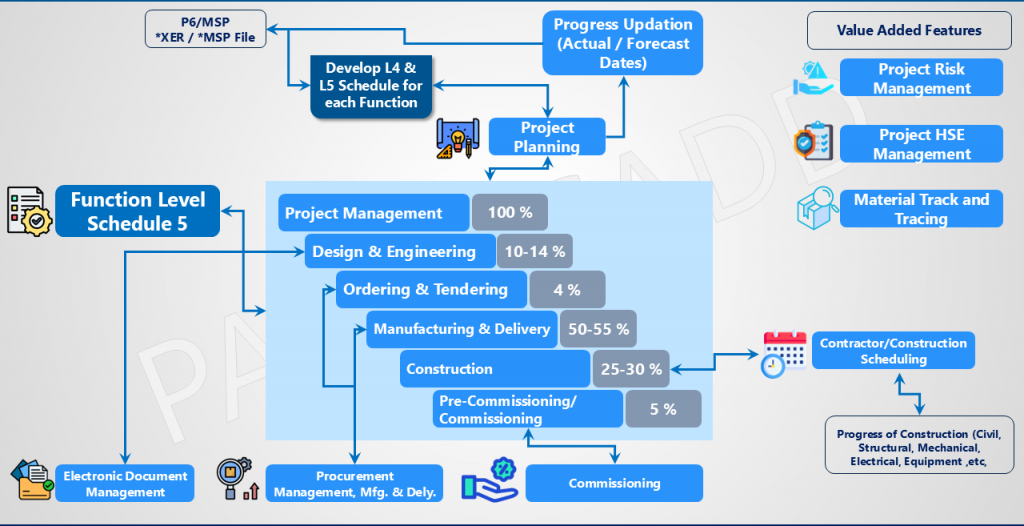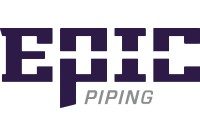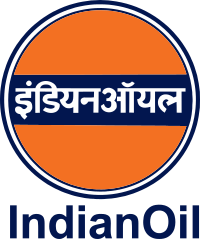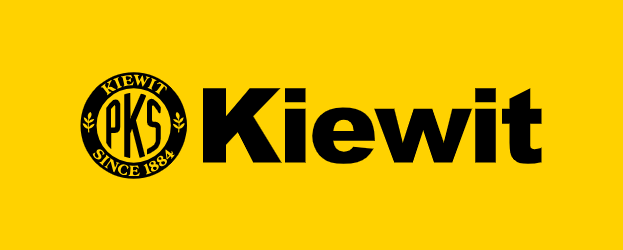EPCPROMAN
End To End Project Management,
Construction Management & Control Software solution including Portfolio Management.

End To End Project Management, Construction Management & Control Software solution including Portfolio Management and all Project Functions like :
- Basic Engineering
- Detailed Engineering
- Procurement (Ordering)
- Tendering
- Manufacturing & Delivery
- Construction
- Commissioning
Built with Advanced Technologies
EPCPROMAN AI For Delivering Better Efficiency
EPCPROMAN AI solution includes Al-Enabled Speech to Text, Database Queries executed through plain English Voice Search, Seamless Integration with BI Technologies such as Data Visualization, Geo Spatial Analysis, & Reporting. Our advanced technology solutions are the one stop solutions to take your EPC information management system to the next level.
EPCPROMAN Features
Products Included in EPCPROMAN
EPCPROMAN includes software from Sr. no. 1 to 24. You can purchase individual software (From Sr. no. 1 to 24)

Office Productivity Suite With Resource Assignment Analysis, Time Booking, File Tracking, To Do List, Calenders etc.

Detailed Functional Scheduling and Rollup progress calculations at Projects/WBS/Discipline/Activity levels etc.


Electronic Document Management System – MDR/VDR, Approval Worflows & Transmittals, Commenting & Progress. Hold – Management/ Resolution/Tracking


Project Risk/Challenges Management System – Risk Register/Matrix/Heat Map/Chart/Profile/Mitigation/Reports. HSE Reports/Approvals/Audit
/Training/Team/Moment

Construction & Contractor Scheduling – Contract Work items, Scope Qty distribution, Schedule/Actual Curves, Progress & Forecast
What is Project Control ?
- Project Control is a set of processes and steps that involve data collection, analysis, and communication to predict and influence the Time and Cost outcomes of a Project or Program.
- It encompasses all stages of a Project or Program's lifecycle, from initial estimating to reflective learning and analysis of failure causes.
- Project Controllers act as radar for Project Managers, helping them plan, manage, and mitigate cost, schedule, and risk issues.
- Project Control is essentially the Project Management Process without its facilitating sub-processes for safety, quality, organizational, behavioral, and communications management.
- The main purpose of Project Control is to manage work during each stage of the implementation lifecycle and prepare the project for the next stage.
Why is Project Control so Important?
- The success of a project relies on proper planning.
- Project Management consists of 9 areas and over 40 processes.
- 24 of these processes are related to Project Control.
- A strong project plan is essential for the execution of a project.
- Effective schedule control methodology is necessary for project execution.
- Developing a suitable Project Control System is important in Project Management.
- Planning and Monitoring are recognized as major causes of project failures.
- Many organizations face challenges in meeting targets for large-scale projects.
- Over 90% of large-scale projects experience cost or time overruns.
- On average, DFR cost increases by over 80% and timelines are delayed by 20 months or more.
- Good project controls are the key difference between successful and unsuccessful projects.
An IBC 2000 Project Control Best Practice Study carried out by IPA identified that good Project Control practices reduce execution schedule slips by 15%.
- Project Controls typically account for 0.5% to 3% of the total project cost, including cost accounting. To achieve a break-even point, Project Control should aim to improve cost effectiveness by approximately 2%.
- In a study conducted by the IBC Cost Engineering Committee (CEC) in 1999, it was found that the projects analyzed showed cost improvements of over 10%.
- It is important to note that schedule improvements also have a positive impact on the Net Project Value (NPV).
- The success of Project Control is heavily reliant on implementing good Project Control practices, which ultimately lead to favorable cost and schedule outcomes.
How can we help in Project Control and Material Control functions?
Major activities under one platform shall include:
Enhancing Owners Oversight in Large-Scale Projects with Interactive Dashboards
Why Should Owners Implement EPCPROMAN?
In large-scale projects, such as those in the Oil & Gas, Petrochemicals, Chemicals, Fertilizers, and Infrastructure sectors, the role of the PMC (Project Management Consultant), EPC / LSTK (Engineering, Procurement, and Construction / Lumpsum Turnkey Contract), Item Rate Contractors & Vendors is often limited to overall monitoring & static reporting with limited or no interactive dashboards oversight.
This high-level role typically involves receiving information in isolated form rather than logically integrated type for managing the project's execution in smart way with dynamically scheduling approach. For effective project management and successful outcomes, it is crucial that all project stakeholders, including Owners, are equipped with comprehensive and integrated systems like an End-to-End Project Management Office (EPCPROMAN).
Our Products for Portfolio Management
- Prepare Functional Schedules for each discipline for all phases of project
- Estimation (for DFR, Tenders & MRs)
- Budgeting, Control, Forecast & Cost Status Report
- Creation of OBS, EPS, WBS & Activity Codes
- Overall Project Network Schedule
- Creation of OBS, EPS, WBS & Activity Codes
- Import and Export data from P6, MSP & Excel
- Resource Loading at Activity Level
- Standardization of Activities for similar type of jobs with Predecessors & Successors and its duration
- Updation of Network, Monitoring, Reporting & Forecast considering various scenarios
- Critical Path Analysis
Dynamic Scheduling & Window Analysis is possible.
- Prepare Construction Schedule in the beginning of the Project for each Tender
- Prepare Contractor Schedules (Quantitative) for each Tender based on SOR quantity.
Calculation of Effective Work Fronts is the basics of Planning & Scheduling.
Dynamic Scheduling & Window Analysis is possible for each Contract.
- MTO Analysis including Substitution of materials for final recommendation for preparation of MRs
- Monitoring & Reporting of Manufacturing / Delivery of materials
- Look Ahead Planning of Materials (Delivery Forecast) for Construction Planning
- It is used for management of materials starting from dispatch of materials to receipt at sites, storage, issue to various agencies, stock status and handing over to the Clients
- Prepare Isometric from existing data and GADs
- Generation of Piping MTO, Specs, Calculations etc.
- SPOOLMAN (Autospooling for Piping)
- Generation of Spool drawings from IDF / PCF Files for Fabrication & Erection
- Generation of MTO for each Spool
- Material Front Analysis (MFA) for each Spool
- Spool-wise materials allocation & generation of Indent/MIV for issue of materials to the agencies
- Live display of Stock Status / Reconciliation of materials
- Spool-wise/Loop-wise/Line-wise/System-wise progress monitoring and reporting with history sht.
- CIVILMAN, STRUCTMAN, EQUIPMAN, HVAC & ENIMAN
- These tools are used for planning, scheduling, monitoring and reporting of Civil, Structural, Equipment, Electrical, Instrumentation and HVAC works at construction sites
Engineering & Material Front Analysis (EFA & MFA) is the basis for material allocation.
- Loop-wise & System-wise progress monitoring and reporting for readiness of the systems
- Monitoring is done of all Units, Utilities & Offsites
Format-I to Format-V are used for Monitoring and Reporting.
- Monitoring & Reporting of Tenders and Contracts
Supporting Software
- It is used for creating data base, making analysis, generation interactive dashboards & reports. Also useful for effective management of manpower using time sheets and other inputs.
- It is used for Hold Management of drawings, documents and materials
- It is used for identification of various Risks, preparation of Risk Plan, Mitigation Plan, Risk Register & Reporting
- It is used for HSE Management considering latest practice in the industries
- It is used for generation of Item Codes based on set norms and as per Clients requirements
- It is used for track & tracing of materials with the help of Bar code, RFID, Mobile App
- It is used for 2D drafting


























